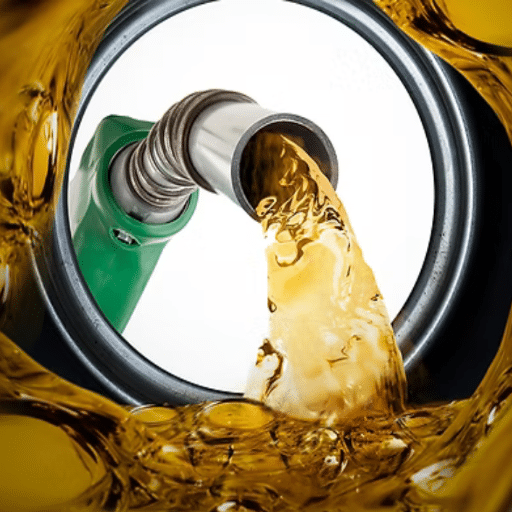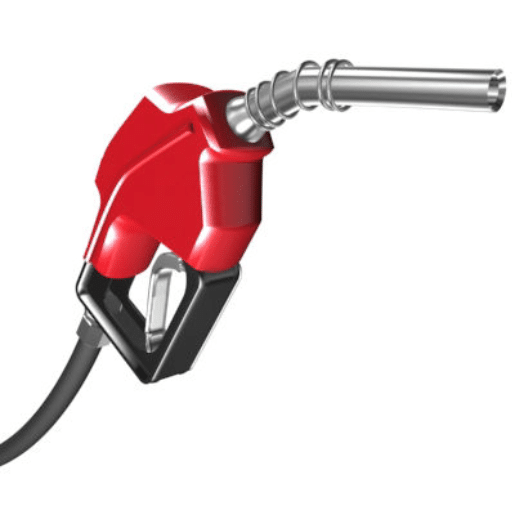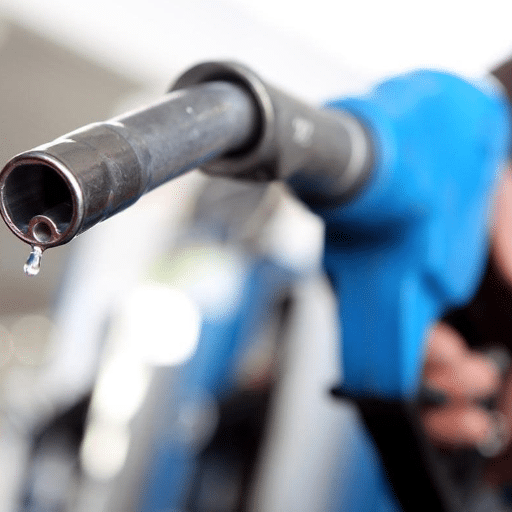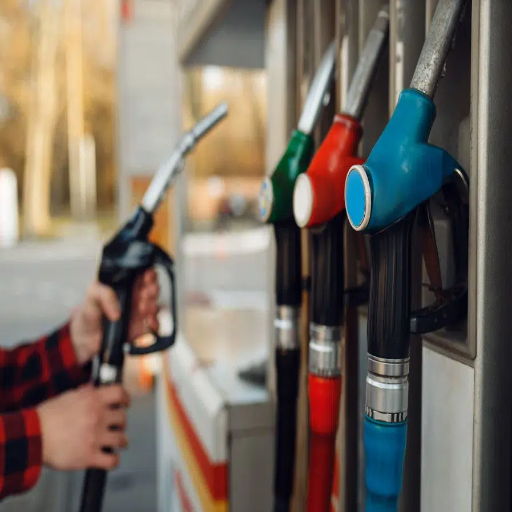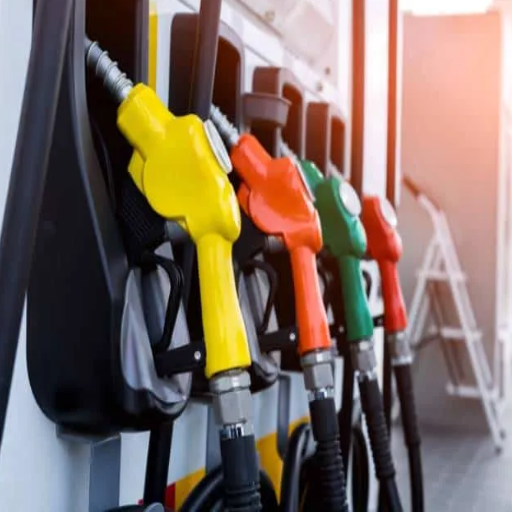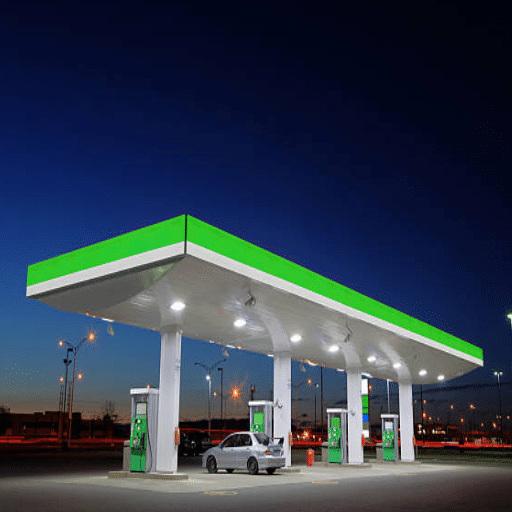Setting up a gas station appears to be a pretty ordinary operation, but behind the familiar architecture lies a complex and well-integrated system catering to various needs of the customers. Nothing is left in disarray for smooth functioning, from placing fuel pumps and convenience stores to incorporating safety requirements and technological advancements. This blog establishes the gas station structure and highlights its components in the chain, the function of each element, and how these work together seamlessly for motorists and business owners. For the curious motorist or prospective entrepreneur, this study will serve as an insightful look into the intricate workings of this essential establishment.
Overview of Gas Station Structures

A gas station’s dual purpose is to provide fuel and convenience. The central structure typically consists of fuel dispensers, underground fuel storage tanks, and a canopy that protects the customer from rain while filling. Gas stations generally have convenience stores with snacks, beverages, and basic needs. Other services may include restrooms, air pumps, and car washes for customer comfort. Every component is meticulously laid out so that the station will be highly efficient, secure, and accessible to a motorist.
Definition and Purpose of a Gas Station
Generally, a gas station sells fuel for motor vehicles, typically gasoline or diesel. The modern service station caters to the motorist’s aspirations for convenience, comfort, and speed. Data shows more than 150,000 gas stations in the U.S. alone, serving millions daily. A gas station essentially sells fuel, but with the growing emphasis on customers’ convenience, some of these gas stations have started offering EV charging stations, which are fast-growing due to the sustainability and renewable energy movement.
Convenience stores in gas stations have been a significant source of revenue for many, selling snacks, coffee, and fast meals favored by travelers. Some modern stations incorporate technology, such as allowing users to pay with their phones from the pump or having digital screens showing advertisements and real-time information on the pumps. Additionally, the emergence of smart gas stations with AI systems and analytics tools shows how the industry responds to the demands of current energy and consumers.
Key Components of a Filling Station
Fuel Dispensers and Pumps: Fuel dispensers are at the heart of every filling station, and they are used to put gasoline, diesel, or other alternative energies into vehicles. Today’s fuel pumps have features such as digital displays, contactless payment options, and fuel consumption tracking. According to recent trends in this industry, the demand for alternative fuels, including electric charging units and hydrogen, is increasing, and many stations are opting to install EV chargers to serve the growing number of EVs worldwide.
Convenience Stores: Most filling stations have convenience stores that contribute substantially to their revenues. These stores sell snacks, drinks, quick eats, and general consumer goods for the traveling public. Health-conscious choices and environmentally friendly items have recently been promoted to keep up with changing customer tastes.
Restrooms and Amenities: Clean and accessible restrooms increase customer satisfaction at filling stations. Many stations are upgrading their restrooms to include family restrooms, baby-changing areas, and showers for truck travelers. Other facilities currently available include free Wi-Fi and comfortable seating areas.
Energy Solutions and Innovations: Renewable energy solutions are gaining traction by introducing solar panels and energy-efficient technology at filling stations. Stations with AI installed will monitor usage patterns, predict peak times, and optimize operations for the best efficiency and cost-effectiveness. Due to the innovations in energy and AI technologies, analysts say the global smart gas station market will undoubtedly grow significantly in the next few years.
Safety and Emergency Systems: Safety equipment like fire extinguishers, spill containment systems, and an emergency shut-off valve guarantee the station’s safety and, by extension, the customers. With the rise of ecological awareness, stations have adopted advanced leak detection systems and greener practices to reduce their environmental footprint.
Hence, by blending classic elements with modern technology and sustainability efforts, filling stations are continuously developing to satisfy the needs of both the drivers and the environment.
Importance of Design in Gas Station Functionality
Design, therefore, fulfills the vital task of guaranteeing a gas station’s efficiency and safety. Good ergonomics in the layout allow drivers to freely move about in a gas station, avoiding crowding and making it a pleasant experience. Some research claims that gas stations with clear entry and exit concepts and strategically located fuel pumps can process almost 30 percent more vehicles per hour than those with traditional or old systems.
The other, and maybe bigger, safety concern is pretty much down to design. Good spacing between fuel dispensers reduces the chances of accidents; ill-marked pedestrian ways and poor lighting could be deadly for customers and staff. Newer designs tend to consider enhanced ventilation systems to avoid the build-up of noxious vapours, especially within underground tank locations.
Sustainability is another significant aspect of gas station design. Newly constructed stations include solar panels, green roofs, rainwater harvesting, etc. According to the latest industry insight, gas stations installing energy-efficient technologies can lower energy consumption by around 40%, saving more money and reducing their carbon footprint.
Adding technology to the station’s designs also increases operational efficiency. Digital signage is being used alongside other technologies, such as mobile payments, real-time fuel price displays, and so on, to cater to the tech generation and make fueling faster. These decisions improve customer satisfaction and, thus, make station owners more profitable.
With an ever-increasing emphasis on functionality, safety, and sustainability, gas station design continues to grow accordingly. At the same time, paradigm shifts in the workings of drivers themselves on a larger environmental scale are considered.
Steel Structures in Gas Station Construction

Steel structure application is widespread in gas station construction because of its strength, durability, and versatility. Steel supports canopies, storage areas, and other structural components that ensure other elements of safety and stability. It offers weather resistance, thus paving the way for easy maintenance over the long term. Being a recyclable material, steel promotes sustainable construction and answers the call of modern gas stations for safety and functional standards.
Advantages of Using Steel in Gas Station Design
Durability and Strength: Steel is known for its high durability and strength, allowing it to resist heavy loads and extreme weather. This characteristic keeps gas station structures in equilibrium and safe for long-term use.
Design Flexibility: CNC design offers tremendous possibilities. It can be fabricated in all shapes and sizes to provide unusual and functional layouts for gas stations that favor maximum space utilization and efficiency.
Cost Effectiveness: Among all these advantages, steel requires an initial investment and, in return, has low maintenance costs, thus helping to reduce expenses in the long run. Alongside saving labor costs due to rapid erection, it helps save a good amount of money.
Fire Resistance and Safety: Steel’s non-combustible nature protects it against fire hazards when used in gas station structures. Such resistance to fire is significant, especially in locations where flammable fuels and chemicals are handled.
Sustainability: Steel is completely recyclable, making it an eco-friendly option for construction. Steel use falls within sustainable construction techniques that minimize waste and maximize resource efficiency.
Ease of Maintenance: Compared to other materials, steel maintenance requires little upkeep, and when treated properly, it stands up well to corrosion. Maintaining functionality and aesthetic appearance over many years is essential for gas station structures.
Types of Steel Structures Used in Gas Stations
Canopies and Roof Systems: Steel canopies are commonly set up to shield a fueling area from inclement weather, ensuring durability and structural stability. They can withstand heavy loads like snow or wind and are often prefabbed to allow for rapid installation.
Framing Systems: Steel framing is an integral part of constructing gas station buildings, including convenience stores, service areas, and restrooms. It provides an excellent strength-to-weight ratio, making it sturdy while allowing for flexible and custom designs that address several layouts.
Support Columns and Beams: Support columns and beams provide weight support for canopy roofs and other structural components. They guarantee safety while permitting open spaces to be crafted underneath the canopies for customers and vehicles to access.
Environmental Considerations in Steel Construction
Steel ranks among the most sustainable materials with multiple benefits for environmentally conscious construction. It is 100% recyclable, which means it may be used and reused with negligible quality degradation while reducing the demand for raw materials. New-age steel production methods require much less energy consumption and produce less greenhouse gas in the atmosphere, reducing the carbon footprint. Prefabricated steel elements account for reduced construction waste on-site and speed up the construction process, thus being the quintessential environmentally-friendly material. Using steel for construction would be done wherever eco-friendly choices are made and sustainability is prioritized, i.e., steel can be the best option for eco-friendly projects.
The Role of the Gas Station Canopy

A gas station canopy serves many vital functions. It is a shelter for clients and cars during fueling, thus protecting against rainy weather, snow, or requiring sunlight. Provision is made for the lighting and signage to be seen after hours, ensuring safety. Thus, canopy design aids in making efficient use ofso the land by integrating fuel dispensers and payment systems while presenting an elegant expression of branding. Placement and design of canopies positively impact customer experience and safer and efficient operational setups.
Design Features of a Gas Station Canopy
Gas station canopies are constructed with an emphasis on durability, safety, and aesthetic value, ensuring that they cater to the divergent needs of customers and businesses. Modern canopy designs incorporate materials like steel or aluminum, giving them high structural integrity and resistance to environmental hazards such as strong winds and heavy snowfall. The roofing system is designed with water drainage avenues to avert any standing water and provide a safer canopy underfoot for customers.
One vital component of energy efficiency in canopy design involves LED lighting. These lights use up to 75% less energy and have an extinction lifespan way beyond traditional lighting systems; hence, they also improve visibility after dark or under inclement weather conditions for the safety and well-being of all concerned.
In addition, canopy designs such as integrated payment systems and digital signage are gaining popularity. The digital displays simultaneously show fuel prices and promotional information, streamlining customer communication. The particular dimensions and spacing of canopies are engineered to accommodate vehicles of various sizes and enable a smooth traffic flow within the fueling station. Generally, the clearance height of gas station canopies ranges from 13 to 16 feet, offering ample clearance for big vehicles, including trucks and recreational vehicles.
Trendsetter canopy designers are also working on integrating solar panels into designs, allowing stations to generate renewable energy for their day-to-day operations. This addition further helps reduce the facility’s carbon footprint and operational costs. Consequently, a well-designed gas station canopy ensures functionality and safety and promotes positive environmental and customer experience standards for modern fueling stations.
Benefits of a Well-Designed Canopy
The gas station canopy has its share of benefits that promote operational efficiency and improve customer satisfaction. Firstly, it is necessary to shelter some weather elements, such as rain, snow, or blazing sunshine, thereby increasing the feeling of comfort for the customers while fueling. A higher customer rating is experienced when the fueling station possesses a covered area, since customers feel safer and relaxed while conducting business.
Secondly, illumination from canopy lighting increases visibility and security when operating at night. LED lighting consumes less energy, by approximately 70%, than conventional lighting, which reduces utility bills and works well with an environmentally friendly strategy.
Beyond the direct functionality, a well-designed canopy can cast solar panels, thus providing a sustainable energy source. Industry sources suggest that a medium-sized canopy for a gas station can produce a daily generation from solar panels ranging from 10 to 15 Kwh. This helps reduce operational costs and decrease dependence on non-renewable energy sources, aligning with global sustainability targets.
An aesthetic look is also an essential consideration for a well-designed canopy. Sleek and contemporary looks help attract more customers by giving off that vibe. Furthermore, clear signage and branding on the canopy add to visibility, which may translate into increased customer footfall and sales for the station.
It pays to design the canopy well, with those few considerations that will functionally, sustainably, safely, and aesthetically meet the requirements of the modern-day fueling station.
Architectural Styles of Canopies
In modern architecture, canopies come in various styles, each designed to meet specific performance and aesthetic criteria. Minimalistic canopy designs are preferred by architects nowadays because of their elegant appearance and emphasis on clean lines; they usually incorporate materials such as glass and steel to give the space a very contemporary feel. These designs even enhance the aesthetics of their location because they allow a significant amount of natural light to pass through and provide durability and safety.
In contrast, traditional styles use wood or stone elements for a rustic and timeless look. Places of cultural or historical importance often have these canopies. Geometric and modular designs featuring patterns like hexagons or dynamic curves offer bold and innovative ideas suitable for modern cityscapes and commercial centers.
Energy efficiency is one factor that heavily influences modern architectural design of canopies. Many feature photovoltaic panels that offer renewable energy solutions while complementing their overall design scheme. Recent data supports that solar panel integration into canopy design can reduce the host building’s energy consumption by up to 30%.
Moreover, materials represent key components in the definition of any architectural style. For instance, tensile fabric is gaining popularity because of its very lightweight yet durable nature, which also facilitates the creation of creative and fluid shapes. Such fabric is perfect for sustainable design as it reduces material waste and increases flexibility.
Another prominent architectural style belongs to adaptive canopies: those with retractability. These can change functionalities as weather conditions require, such as opening to provide shade during sunny days or closing to allow natural light to pour in during cloudy periods. This ability to adapt supports the increasing interest in responsive design and the focus on end-user perspectives.
To sum up, a canopy’s architecture is a beautiful fusion of design, utility, and innovation—the main contributors to its utility and, indeed, architecture that enhances the visual identity of the given space.
Project Planning and Construction of Service Stations
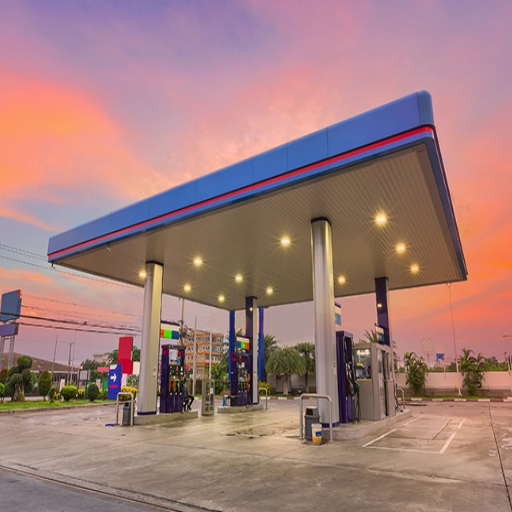
Many factors influence the planning and construction of service stations, with the essential elements being function, security, and efficiency. The location must be primarily chosen for accessibility and visibility while favoring a high-traffic area for best utilization. Design must consider environmental factors, attuned with proper steep slope drainage to avoid fuel contamination, or incorporate sustainable energy.
Construction tenure of excellent materials that will weather all marinating elements and withstand the calculated abuse of usage conditions. Space allocation is paramount; it has to be sufficiently big to fit the fuel pumps, convenience stores, and parking area with room for future expansions. Local statutes and safety standards should always be observed during the procedure, ensuring public and environmental safety and avoiding relinquishment or the chance of being fined.
Technical systems emphasizing ease of use, such as modern and automated fuel dispensers and electric vehicle charging stations, will boost the service station’s allure and functionality.
Steps in the Design and Construction Process
Site Analysis and Feasibility Study: Conduct a detailed site analysis to determine whether the chosen location works for the development. Consider zoning, environmental impact, traffic patterns, and other accessibility factors. Conducted feasibility studies to ensure the project complied with market demand, financial forecasts, and regulations.
Planning and Permits: Prepare plans for site layout, architectural design, and engineering specifications. Submit all the plans to the local authorities and procure all the necessary permits, such as environmental clearances, working permits, fuel storage licenses, etc. Coordination with regulatory bodies is crucial to prevent a holdup in this phase.
Design Development and Technology Selection: Design development shall consider the users’ convenience for all aspects of ambiance, especially fuel pumps, convenience stores, parking, and future expansions. The design shall incorporate modern technology, such as automated dispensers, EV chargers, and so on, to ensure the station’s functionality is of the utmost standard. Consultant engineers should be employed to ensure that the structure design is structurally and safety-wise sound.
Construction and Quality Control: During the execution, construction shall follow approved designs and consider the related safety regulations and standards. Regular inspections and quality controls shall ensure continuous monitoring of the construction process and immediate correction of irregularities.
Installation of Systems and Equipment: All fuel and equipment, EV charging infrastructure, signage, and security systems are installed. All systems must be tested and calibrated for efficiency and abide by safety and environmental regulations.
Operational Readiness and Final Approvals: Safety checks, employee training, and final trial operation shall be conducted to ensure that the Station works perfectly. Final approvals or certificates from the relevant authorities shall be obtained before the Station’s official opening to the public.
Considerations for Highway Service Stations
For highway service stations, my decisions would revolve around the convenience of use, with safety and accessibility being of utmost concern. I would offer clean restrooms and adequate parking. Roadside signage would be enticing enough for ease of location. I would also have all types of fuels, food options catering to all needs, and the service types a traveler may desire, including EV charging stations. I would top this with adhering to safety and environmental laws to maintain safe and sustainable operations.
Regulatory Requirements for Gas Station Construction
Constructing a gas station involves strict regulatory requirements that ensure safety, environmental protection, and operational efficiency. First are zoning laws specifying if a particular site can be used for gas station purposes. Environmental regulations are also considered, requiring safeguards against soil and groundwater contamination, such as a double-walled underground storage tank with a leak detection system. Other standards are set for fire safety, concerning the installation of fuel dispensers, spacing requirements between tanks and other structures, and emergency shutoff systems.
Permits are also issued at various stages, such as environmental permits, construction permits, and operational licenses. Other accessibility regulations provide features such as wheelchair-accessible restrooms and refueling assistance under the Americans with Disabilities Act (ADA). State and federal inspectors regularly audit to ascertain that a gas station operates safely and sustainably to affirm the public good and the environment.
Future Trends in Gas Station Design

As consumer requirements and industry demands evolve, gas stations are also going through changes. One of the trends is integrating EV charging stations to support the growing adoption of EVs. Several designs currently emphasize renewable energy sources like solar-powered canopies for a better sustainability perspective. Convenience and automation are also gaining center stage, with features like payment through mobile apps and self-service kiosks. Modern gas stations lean toward eco-friendly materials and layouts that reduce environmental impact and uplift customer experience. All these trends signify a move towards greener, more intelligent, and adaptable fueling infrastructure.
Sustainable Practices in Gas Station Construction
With the increasing demand for ecologically sound infrastructure, sustainability in gas station construction has become a priority. One of the main goals of the sustainability approach is to use renewable energy sources, including solar energy, in the whole or partial operation of gas stations. Studies have indicated that when combined with solar panels, the gas station can reduce operational energy costs by around 30% and significantly reduce carbon emissions.
Another environmentally friendly measure would be to consider energy-efficient lighting solutions, such as LED fixtures, which consume roughly 75% less energy than traditional incandescent bulbs and last 25 times longer. Rainwater harvesting and reduced water usage via low-flow plumbing are examples of other water-saving methods implemented to reduce water consumption and, consequently, the impact on natural resources.
On the other hand, using construction materials greatly defines sustainable development. Several gas stations are at the forefront of their green practices by using recycled materials like reclaimed steel and concrete and favoring materials with low embodied carbon footprints. Also, green roofs and permeable pavements are used in rainwater management to help alleviate the heat island effect and improve air quality.
Over and beyond, some gas stations have started integrating EV charging stations, nudging the shift toward cleaner transportation. With the rise of networked EV fast chargers, stations now have an opportunity to serve the growing number of EVs being put on the roads. This gives green mobility another leg and attracts a broader clientele base.
These developments created by the gas station industry show that their intent is to reduce environmental impact and keep themselves up to date with what the greener future calls for. With innovations in construction methodology plus a little green-tech touch, you can have an environmentally friendly gas station that does not kill functionality.
Innovative Technologies in Fueling Stations
I am fascinated by innovative technologies in fueling stations; thus, digital integration with sustainable systems comes to my mind. For example, installing charging infrastructure for EVs with normal fuel dispensing shows the move to support the electric vehicle environment. Also included in this suite of services are contactless payment methods and mobile applications that enable convenience for consumers. Intelligent energy management systems involving solar panels and LED lighting stand further to reinforce environmentally conscious solutions while lowering operational costs. Thus, fueling stations are evolving with this blend of technologies diametrically aligned toward modern demands based upon the principle of sustainability!
Community Impact and Urban Planning for Gas Stations
As urban mobility depends on gas stations, these facilities also greatly affect community well-being and urban development. Urban planning for fuel stations must focus on accessibility while being mindful of public safety, environmental concerns, and the general beauty of the city.
An essential component of urban planning would be adhering to different zoning regulations and environmental policies. Particularly, constructing gas stations near residential areas would probably mean disputes over noise pollution and air quality due to emissions. Newly conducted studies show that emissions from vehicles near gas stations can cause localized concentrations of VOCs to be higher, enforcing the need for stringent location selection and containment measures. Modern-day fuel stations go farther in installing vapor recovery systems to curb the release of toxins.
Economically, gas stations can foster positive growth in local economies by creating employment and providing commercial opportunities in their neighborhood. They often act as a focal point of convenience, granting car maintenance services, small shops, and EV charging stations. Recent data points to new trends of using existing gas stations to integrate charging infrastructure and serve as an interim solution as urban areas transition to sustainable energy use.
As in the planning work, good accessibility and traffic flow distribution must be ensured to avoid problems arising from bad location design and interference from nearby road intersections. Traffic simulation and modeling considerations could now produce a fair forecast to ensure the impact makes a good workflow for interacting vehicles and pedestrians.
Additionally, gas stations are embracing green initiatives such as solar panel installation, rainwater harvesting systems, and landscaping green spaces, which collectively reduce their environmental footprint and assist in implementing the global sustainability agenda. For example, a recent report indicates that such stations can reduce operational carbon emissions by 40% under energy-efficient technologies, some of which directly contribute to climate change mitigation.
This approach, which applies modern design standards, sustainability considerations, and advanced technologies to urban gas station planning, ensures that gas stations can remain relevant and valuable to the community.
Reference Sources
1. Petroleum Filling Stations and Their Environmental Impact in Nigeria (2022)
2. Hybridization of Gas Stations with Solar Thermal Plants Using ETAP (2021)
3. Sustainability-Based Location Selection for Charging Stations Using AHP (2023)
Frequently Asked Questions (FAQs)
What are the main components of a gas station?
The primary components of a gas station include fuel pumps, underground storage tanks, canopy structures, a convenience store, and service areas. These elements work together to provide customers with fuel, essential goods, and services.
How do underground storage tanks work in a gas station?
Underground storage tanks safely hold large quantities of fuel. They are designed to prevent leaks and contamination and are connected to the fuel pumps through a network of pipes.
What purpose does the canopy serve?
The canopy provides protection from weather elements like rain and sun for customers fueling their vehicles. Additionally, it often houses lighting and branding for the gas station.
Is the layout of all gas stations the same?
No, gas station layouts vary based on location, size, and services. Highway service stations tend to have larger layouts with additional facilities, while urban gas stations may prioritize compact and efficient designs.
Why is ventilation important in gas station structures?
Ventilation is critical to ensure the safe dispersion of any fuel vapors that might accumulate. Proper ventilation helps maintain air quality and reduces the risk of fire hazards.

